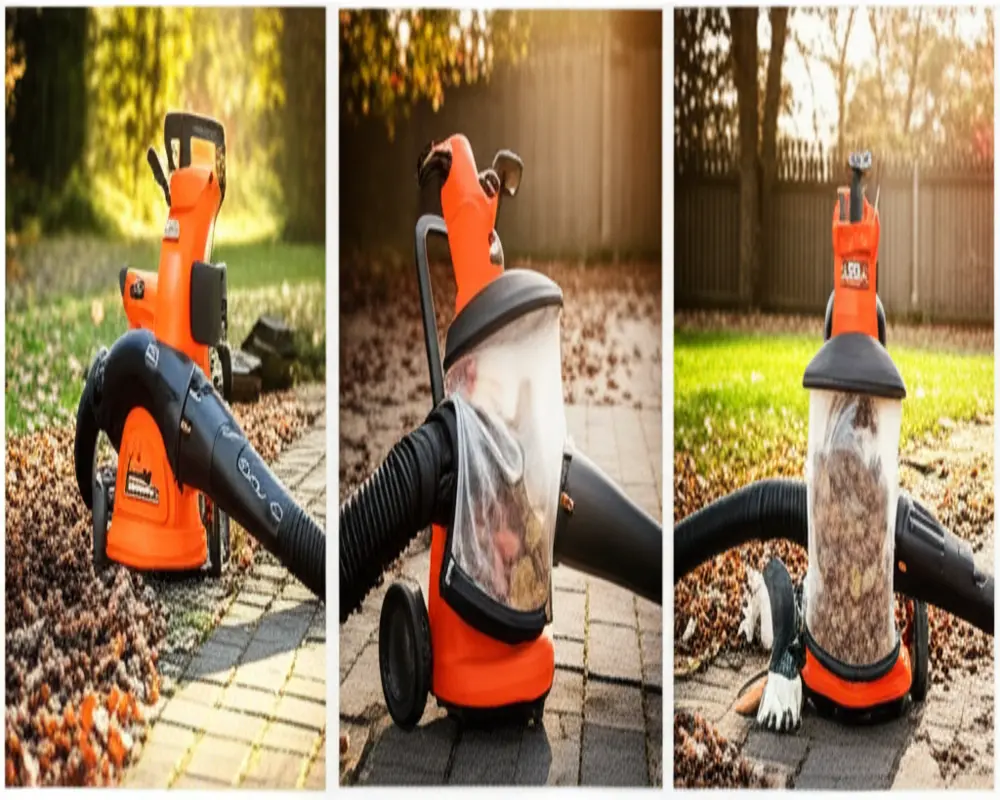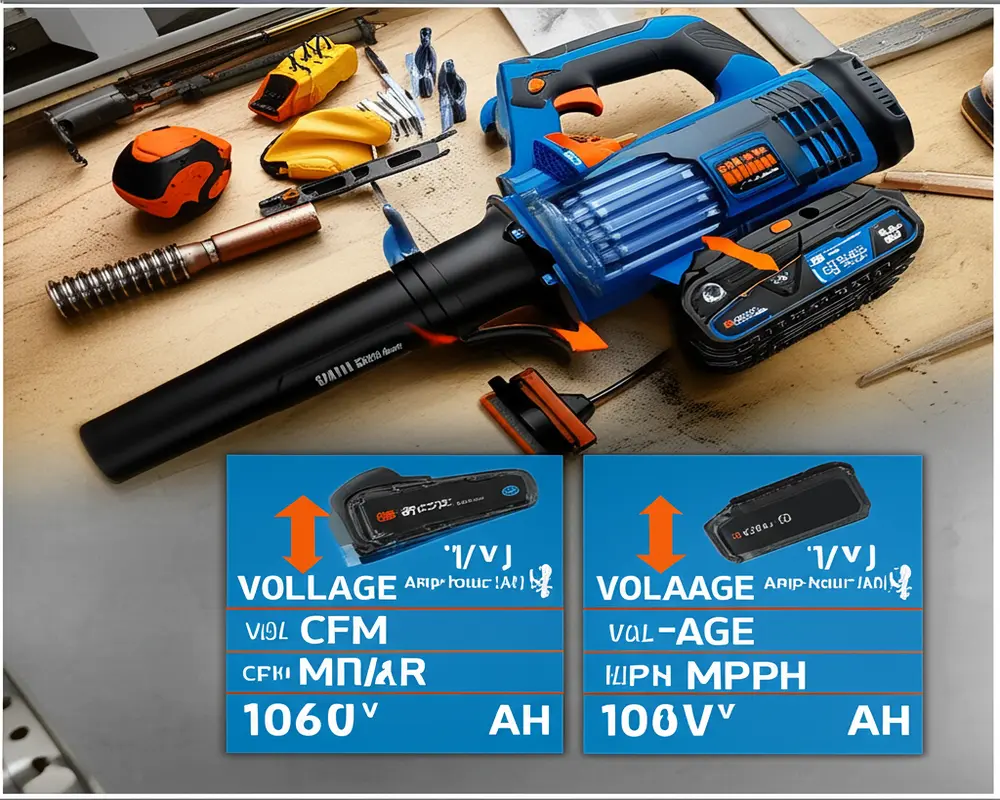Cordless Leaf Blower vs Gas Leaf Blower: The Definitive Guide
I. Introduction: Choosing Your Ideal Leaf Blower
Every autumn, gardeners and homeowners face the persistent challenge of clearing fallen leaves and debris from their yards. The choice between a cordless leaf blower vs gas leaf blower often becomes a pivotal decision that influences the ease, efficiency, and environmental impact of this task. This guide aims to provide a comprehensive, unbiased comparison to assist you in making an informed choice tailored to your yard size, debris type, and maintenance preferences.
The modern landscape of leaf blowers primarily revolves around two key options: cordless battery-powered models and traditional gas-powered machines. Each comes with distinct advantages and limitations, which we will explore in detail to help you align the equipment choice with your specific needs.
II. Gas Leaf Blowers: Unpacking the Powerhouse
Gas leaf blowers function using either 2-stroke or 4-stroke internal combustion engines fueled by gasoline or a gasoline-oil mix. These engines generate high torque and prolonged power output, making them the traditional choice for heavy-duty yard work.

The key advantages of gas leaf blowers include:
Raw Power & Performance: Gas blowers deliver significantly higher cubic feet per minute (CFM) and miles per hour (MPH) ratings, crucial for moving heavy, wet leaves, thick sticks, and other stubborn debris. This makes them ideal for large properties and commercial use.
Unlimited Run Time: Unlike battery-operated models, gas blowers continue running as long as fuel is available, allowing for extended periods of uninterrupted work.
Professional & Commercial Use: Designed for continuous, heavy-duty operation, these blowers are preferred by landscaping professionals.
Versatility: Many gas blowers support attachments such as mulchers and vacuum kits, increasing their functionality.
However, these benefits come with notable disadvantages:
Noise & Emissions: Gas blowers produce considerable noise—often exceeding 90 decibels (dB)—and emit exhaust fumes, contributing to environmental pollution and potential health concerns.
Maintenance Requirements: Regular upkeep includes fuel mixing for 2-stroke engines, oil changes for 4-stroke variants, spark plug and air filter replacements, carburetor cleaning, and seasonal winterization.
Weight & Vibration: Gas models tend to be heavier and generate more vibration, which can lead to operator fatigue during prolonged use.
Starting & Reliability: Traditional pull-cord starting mechanisms can be temperamental, particularly in cold or damp conditions. Carburetor issues may also affect reliability.
Fuel Storage & Handling: Requires safe storage of gasoline and proper handling procedures to avoid spills and hazards.
Gas blowers come in several types including handheld, backpack, and walk-behind, each suited to different scales of yard maintenance.
III. Cordless (Battery-Powered) Leaf Blowers: The Modern Contender
Cordless leaf blowers operate on rechargeable lithium-ion batteries, with their performance influenced by battery voltage (V) and amp-hour (Ah) ratings. Higher voltage and Ah generally translate to greater power and longer runtime.

The advantages of cordless leaf blowers are compelling:
Eco-Friendly & Healthier: They operate quietly with noise levels often below 70 dB and produce zero emissions, making them environmentally responsible and neighbor-friendly.
Ease of Use & Convenience: With instant push-button starts, lightweight designs, and minimal vibration, they offer user-friendly operation without the hassle of fuel mixing or pull cords.
Minimal Maintenance: Maintenance is largely limited to battery care and occasional cleaning, eliminating the complexities of engine upkeep.
Portability & Maneuverability: Absence of cords allows for easy navigation around plants, fences, and tight spaces.
System Compatibility: Batteries are often interchangeable with other power tools within the same brand ecosystem, enhancing value.
Despite these benefits, cordless blowers face some limitations:
Power Output: While improving rapidly, cordless models generally deliver less power compared to high-end gas blowers, especially for heavy, wet debris.
Limited Run Time: Battery life typically ranges from 20 to 60+ minutes, necessitating recharging or spare batteries for larger jobs.
Battery Life & Cost: Batteries are a significant investment and degrade over time, requiring replacement every few years.
Charging Time: Downtime during charging can interrupt workflow, particularly for large properties.
Initial Cost: Higher upfront expenses may arise if additional batteries or chargers are needed.
Cordless blowers are available primarily as handheld or backpack models, catering to various user preferences and job scales.
IV. Direct Comparison: Gas vs. Cordless – A Side-By-Side Analysis
| Feature | Gas Leaf Blowers | Cordless Leaf Blowers |
|---|---|---|
| Power (CFM/MPH) | High to Very High | Moderate to High (Improving for dry/moderate debris) |
| Run Time | Unlimited (with fuel) | Limited (battery dependent, 20-60+ mins) |
| Noise Level | Very High (90+ dB) | Low to Moderate (under 70 dB) |
| Emissions | High (exhaust fumes) | Zero |
| Maintenance | High (engine care, fuel handling) | Low (battery and cleaning) |
| Weight | Moderate to Heavy | Light to Moderate |
| Starting | Pull-cord | Push-button |
| Vibration | High | Low |
| Storage | Fuel safety required | Compact, no fuel concerns |
| Initial Cost | Moderate to High | Moderate to High |
| Operating Cost | Ongoing fuel, oil | Electricity for charging, battery replacement |
| Best For | Large properties, heavy debris | Small to medium yards, residential use |
Understanding the distinction between CFM vs MPH is crucial. CFM (cubic feet per minute) measures the volume of air a blower moves, while MPH (miles per hour) measures the air speed. For effective leaf removal, a balance of high air volume and speed is required: volume moves the leaves, speed dislodges stubborn debris.
Noise levels are an important consideration not just for user comfort but also for compliance with local regulations. Gas blowers often exceed 90 dB, necessitating hearing protection, whereas cordless models operate more quietly, typically below 70 dB. The perceived noise can also be influenced by diet and individual sensitivity.
When considering the total cost of ownership (TCO), factor in the initial price, fuel or electricity costs, maintenance expenses, and battery replacements. Gas blowers may have lower upfront costs but higher ongoing expenses, while cordless models require investment in batteries and chargers, which depreciate over time.
V. Which One is Right For YOU? A Decision-Making Guide
Choose a Gas Leaf Blower If You: Own a large property (half an acre or more) and regularly contend with heavy, wet leaves, sticks, and dense debris. You need extended, uninterrupted runtime and prioritize maximum power. You are comfortable with engine maintenance and fuel handling.
Choose a Cordless Leaf Blower If You: Manage a small to medium yard (under half an acre) with mostly dry leaves, grass clippings, and light debris. You value quiet operation, zero emissions, minimal maintenance, and easy start-up. Owning compatible battery-powered tools can enhance convenience. You accept managing battery runtime and charging cycles.
Some users find a hybrid approach ideal, using a small cordless blower for quick cleanups and a gas blower for heavy seasonal tasks, combining convenience with power.
VI. Important Considerations Before Buying (Beyond Gas vs. Cordless)
Ergonomics and weight significantly affect comfort during prolonged use; backpack models offer better weight distribution than handheld units. Nozzle types—round versus flat—and attachments like concentrators tailor the blower for specific tasks.
Variable speed control allows precision, enabling gentle blowing for delicate areas and full power for heavy debris. Brand reputation and warranty terms contribute to reliability and customer support confidence.
Local regulations may restrict gas-powered equipment due to noise or emissions, so verify any restrictions in your area before purchasing.
Remember the importance of balancing air volume (CFM) and air speed (MPH) for efficient debris removal tailored to your yard’s specific needs.
VII. Maintenance and Safety Tips
For Gas Blowers: Use fuel stabilizers to prevent degradation, store properly to avoid moisture damage, clean regularly, and check spark plugs to ensure reliable starts. Winterize to protect carburetors and fuel systems during off-seasons.
For Cordless Blowers: Maintain battery health by storing at recommended temperatures, avoid overcharging, and clean blower components to prevent debris buildup.
Universal Safety: Always wear eye and hearing protection—especially critical for gas blowers—and sturdy footwear. Keep the work area clear of obstacles and bystanders to prevent accidents.
VIII. Conclusion: Making Your Informed Decision
Both cordless leaf blowers vs gas leaf blowers offer unique strengths tailored to different user needs. Gas blowers excel in power and endurance for large, debris-heavy properties, while cordless models provide eco-friendly, quiet, and low-maintenance options perfect for small to medium yards.
Align your choice with property size, debris type, and personal preferences. Review the comparison table and consider your specific use cases carefully to select the right tool.
Empower yourself with this knowledge to enjoy efficient, effective, and responsible yard maintenance.
IX. Frequently Asked Questions (FAQs)
- Q1: How long do cordless leaf blower batteries last?
- Battery runtime typically ranges from 20 to 60+ minutes, depending on battery capacity and blower power settings. Higher Ah batteries provide longer run times but may add weight.
- Q2: Can I convert a gas leaf blower to electric?
- Converting a gas blower to electric is generally not feasible due to fundamental differences in power sources and design. It’s more practical to purchase an electric model suited to your needs.
- Q3: Are gas leaf blowers being banned?
- Several regions have introduced restrictions or bans on gas-powered leaf blowers due to noise and emissions concerns. Check local regulations to ensure compliance before purchasing.
- Q4: What CFM/MPH do I need for my yard size?
- Small yards (under 1/4 acre) can be managed with 300 CFM and 100 MPH models. Medium yards (up to 1/2 acre) benefit from 400-500 CFM and 120-140 MPH. Large properties require 500+ CFM and 140+ MPH for effective cleanup.
- Q5: Is it worth buying a refurbished leaf blower?
- Refurbished leaf blowers can offer cost savings if purchased from reputable sellers with warranties. Ensure the blower has been thoroughly inspected and serviced to avoid reliability issues.
For further insights on leaf blower troubleshooting, see our article on leaf blower won’t start.
Explore detailed reviews of specific models such as the Black & Decker leaf blower to understand real-world performance and user feedback.
For a broader understanding of commercial-grade equipment, visit commercial leaf blower resources.
Additional expert advice and comparisons can be found on external authoritative sites like Family Handyman’s gas vs electric leaf blower guide, The Spruce’s cordless vs gas leaf blower comparison, and Home Depot’s types of leaf blowers guide.
Image Descriptions for Visual Aid
- cordless-vs-gas-leaf-blower-hero.webp: Side-by-side comparison of a cordless leaf blower and a gas leaf blower in a residential yard setting, highlighting their size and design differences.
- gas-leaf-blower-attachments.webp: A gas leaf blower equipped with various attachments such as a mulcher and vacuum, demonstrating its versatility.
- cordless-leaf-blower-battery-explained.webp: Visual explanation of cordless blower battery voltage and amp-hour ratings, illustrating their impact on performance and runtime.

